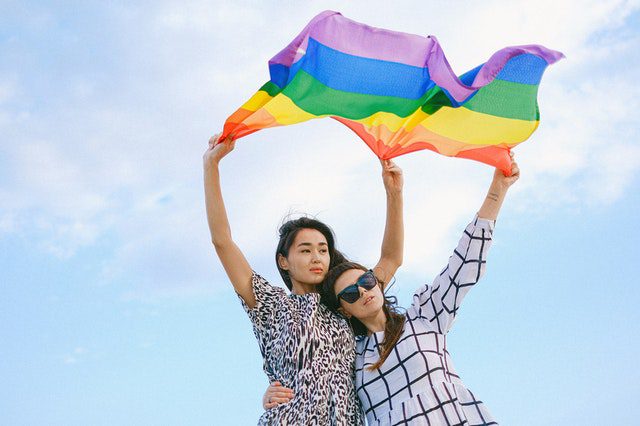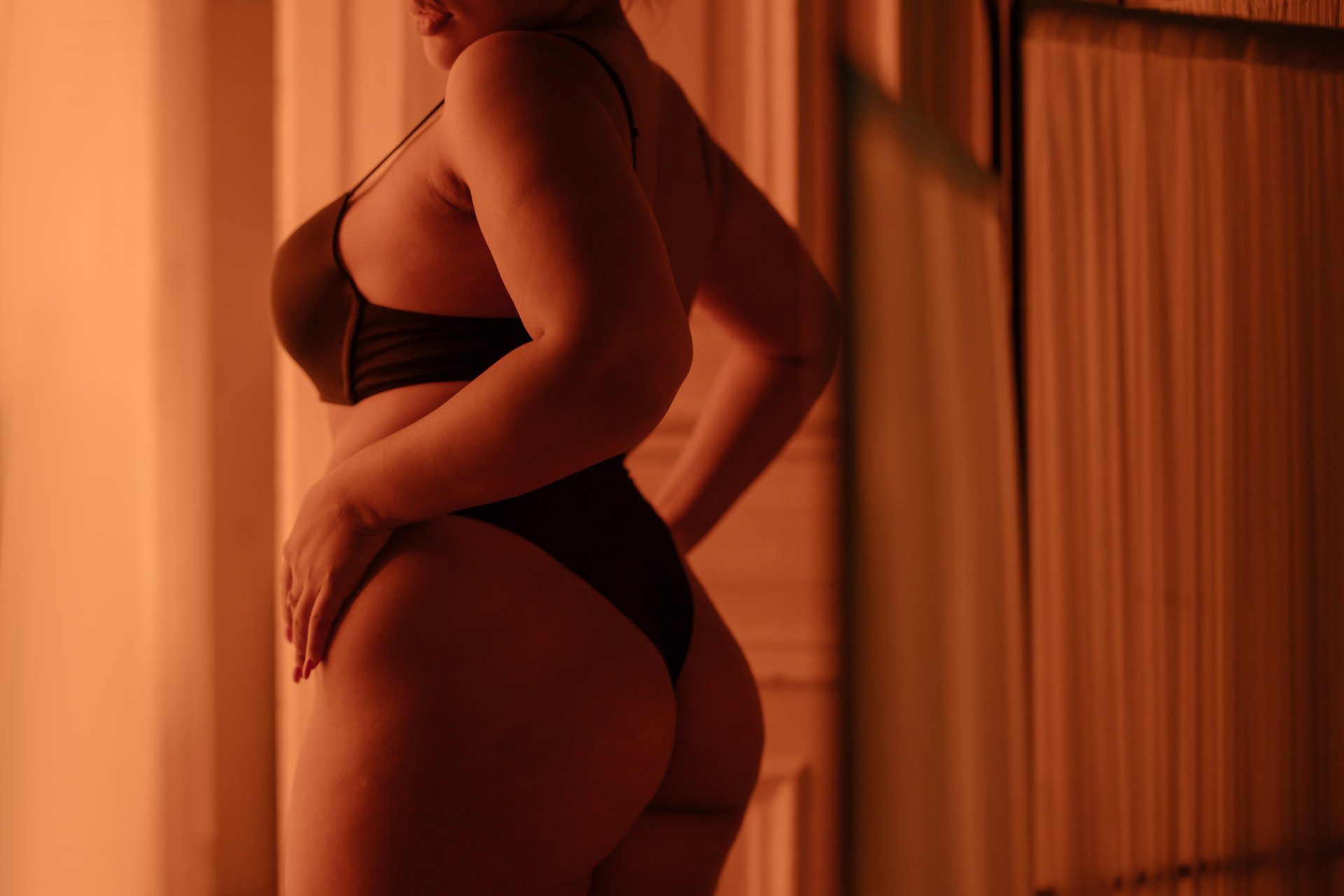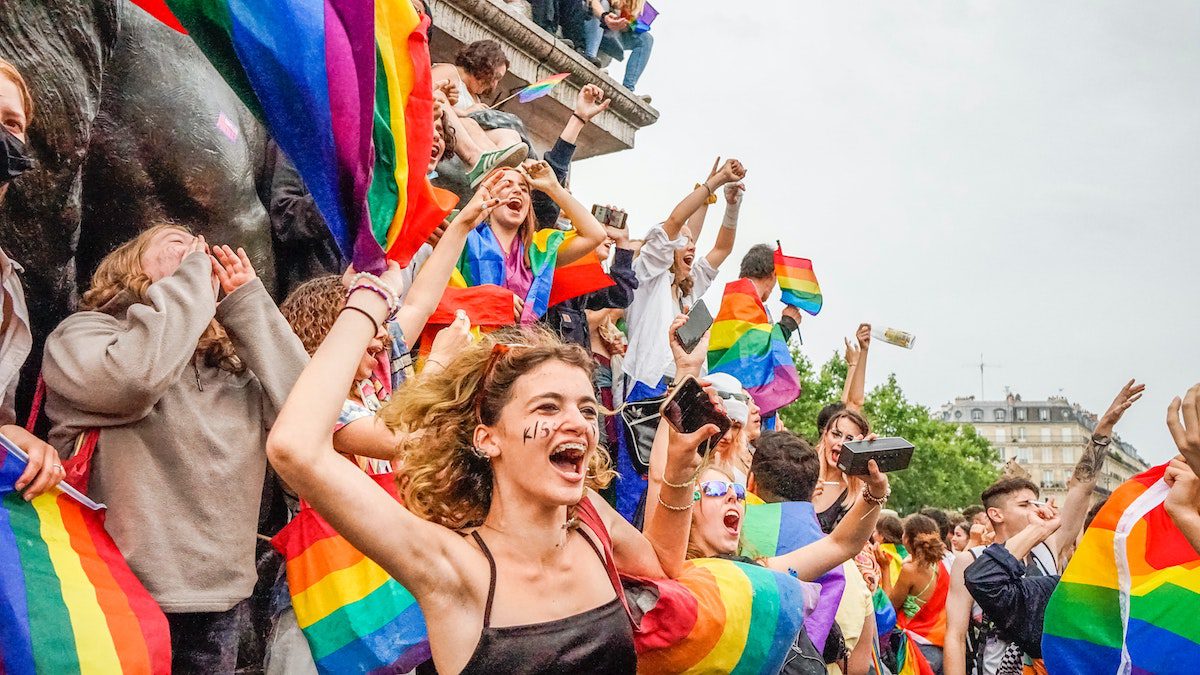
ALL YOU NEED TO KNOW ABOUT PRIDE FLAGS
The numerous pride flags we all know and love today represent a segment or part of the LGBTQA+ community, formerly known as the LGBT community.
These flags allow members of this community to express their pride and honor to be part of something that has gained such an admirable voice in recent years.
It is essential to distinguish between the various flags and thoroughly understand their history and importance in today’s society.
The LGBTQA+ pride flags are symbols of acceptance, solidarity, and inclusion. Equal civil rights is an ever-present obstacle, and every flag was created to support all members fighting this battle daily.
Let’s look at the brief history and some additional details of each individual pride flag.
Agender Pride Flag
Agender persons identify as gender-neutral. Agender very literally means „without gender“. Concerning pronouns, Agender people can be referred to using any set of pronouns they prefer or even no pronouns at all.
Salem X created the Agender flag in 2014. This flag has seven horizontal stripes of black, white, gray, and green colors.
Black And White-
This color represents the absence of any gender.
Gray-
This represents semi-genderlessness
Green-
This represents non-binary genders
Members of the Agender community are those who identify as having no gender, those who don’t align with any gender, those who are gender-neutral, and those who choose not to categorize their gender.
In 2014, another version of the Agender flag was designed by Rumpus Parable. This flag included three stripes of only black and white, chosen this way to differ from other pride flags in that they don’t separate genders.
The black stripe represents people with no gender identity. The white stripes represent the inclusion of those who are non-binary.
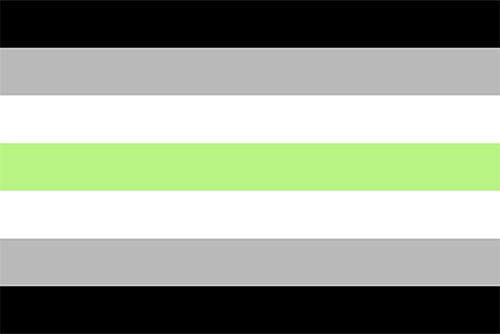
Aromantic Pride Flag
An aromantic person does not experience romantic allurement in the way most do or who does not experience it at all.
The original flag of this community is a four stripe flag of colors yellow, black, orange, and green.
As red is often considered to be the representing color for romance, green is included as its opposite.
Yellow is the color that represents friendship.
Orange is the intermediary color between red and yellow, included for gray-romantics.
Black is the representative of all romantics who does not conform to the traditional concepts of romance.
An Australian called Cameron designed the second aromantic flag in 2014. This flag consists of a design of dark-green, light-green, yellow, gray, and black stripes.
The third flag design of the aromantic flag is also the most popular and accepted of the three.
Dark-Green- This represents aromanticism in general.
Black- This represents the spectrum of sexuality.
Light-green- Constitutes the aromantic spectrum.
White- Speaks for aesthetic attraction, as well as queerplatonic relationships.
Grey- Acts for grey-aromantic and demiromantic people.
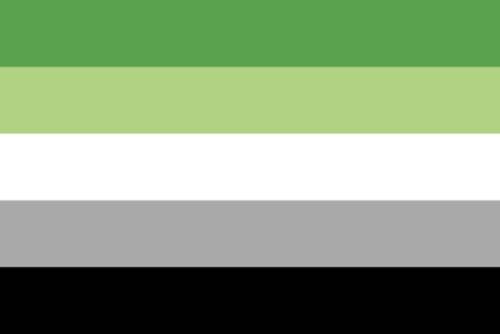
Ally Pride Flag
The origin and creator unknown, this flag incorporates the rainbow flag and resonates with many. This flag was designed for people who are not technically part of the LGBTQA+ community but are great supporters of it.
There are a few types of allies namely straight allies. As the name implies, straight allies are heterosexual and/or cisgender individuals who are supportive of equal civil rights and gender equality.
These gender binary supporters are well informed and involved in LGBTQA+ movements. A member of this community challenges homophobia, transphobia, biphobia, and any discrimination against members of the LGBT community in general by actively participating in the forward movement of equality.
The Big A-
The „A“ seen on the flag represents the word „allies“.
Rainbow Colors-
The colors of the rainbow flag represent the LGBTQA+ community.
The Black And White Bars-
The bars seen in the background of the flag represent people who are cisgender/heterosexual.
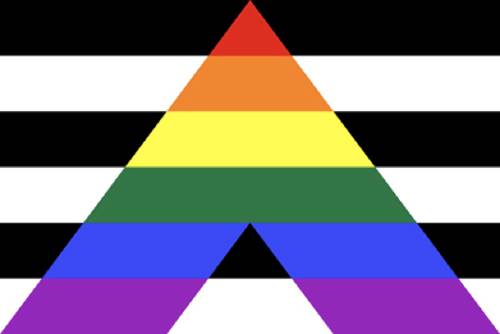
Asexual Pride Flag
A person identifies as asexual when they lack sexual attraction to all genders.
In 2010, the Asexual Visibility and Education Network held a contest for the creation of a pride flag to support those who identify as asexual.
The design consists of horizontal stripes of different colors.
Black- This constitutes asexuality.
Gray- This represents Gray-sexuality and demi-sexuality.
White- This color acts for non-asexual people and allies.
Purple- This represents the concept of community.

Bisexual Pride Flag
Bisexuality entails being sexually attracted to two genders. The Greek word „bi“ means two.
The bisexual flag was created in 1998 by Micheal Page. The flag was designed to set apart the representation of bisexuality from the gay pride flag and the rainbow flag.
This flag consists of horizontal stripes of three colors.
Hot Pink- This color represents the attraction to people of the same gender identity as yourself.
Purple- This represents the attraction to two genders.
Blue- This color represents the attraction to people with a different gender identity than you.
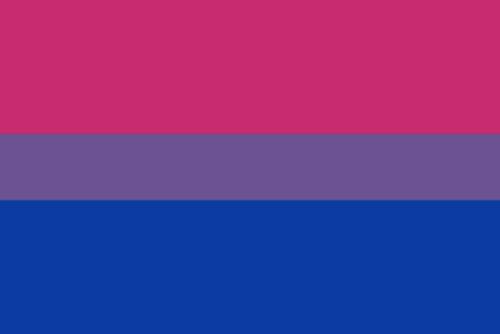
Butch Lesbian Pride Flags
A butch lesbian is a female who is attracted to other females and typically conforms to a more masculine appearance and demeanor.
This flag was originally introduced in 2016 and was designed in support of lesbian women who do not identify with the lipstick lesbian flag as it is too feminine to accurately define their nature.
An alternative Butch flag was later created to encourage positivity in being a butch lesbian.
The specific meaning of the color variations are speculations rather than fact as this flag is based on the combined symbolism of other lesbian flags such as the lipstick lesbian flag and the labrys lesbian flag.
Blue- This represents masculinity.
White- This represents a broader inclusion of all individuals across the gender and sexuality spectrum.
Purple- The purple symbolizes lesbianism and those who identify as women.
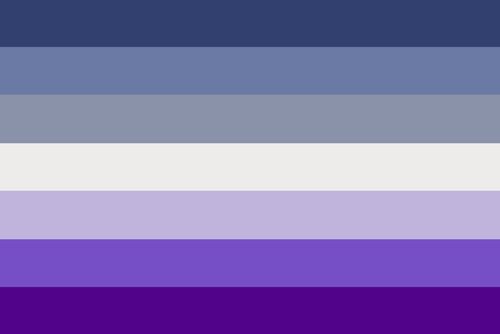
Demisexual Pride Flag
A demisexual individual is someone who is only attracted to another person after forming an intimate emotional bond with them. Demisexuality is categorized into the broader concept of asexuality.
The Asexuality Visibility and Education Network coined the term Demisexuality in 2006, after which the term gained popularity.
This term supports those who cannot identify as being completely asexual or completely nonsexual. Such individuals need to establish a deep emotional bond before becoming sexually attracted to someone.
Although this need for a deeper connection is often longed for by many people, for demisexual individuals it is an absolute requisite for a sexual relationship to arise.
The colors and design in this flag were created to closely resemble that of the asexual pride flag.
Black- This represents asexuality.
Gray- This color represents asexuality and demisexuality.
White- This color symbolizes sexuality in general.
Purple- Purple once again symbolizes community.
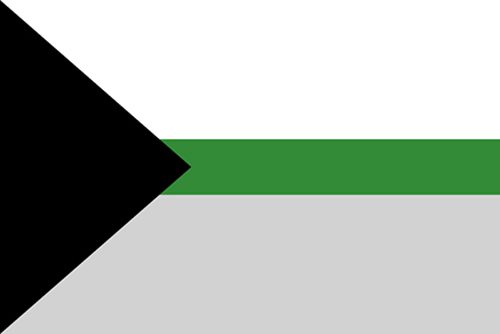
Intersex Flag
An intersex person is someone who was born with physical sex characteristics that cannot definitively be defined as adhering to a traditional female or male body.
In 2013, this flag was created by Morgan Carpenter who designed this flag with the intention of creating a flag with a firmly grounded meaning. This pride flag is meant to give the average person a clear understanding of what it means to be intersexual.
The popularity of this flag has increased immensely due to its unique design.
Yellow- This color was used as it is well known for being a gender-neutral color.
Purple- As with yellow, this color is considered to be gender-neutral.
Circle- The circle on the flag represents the wholeness and strength of intersexual people.
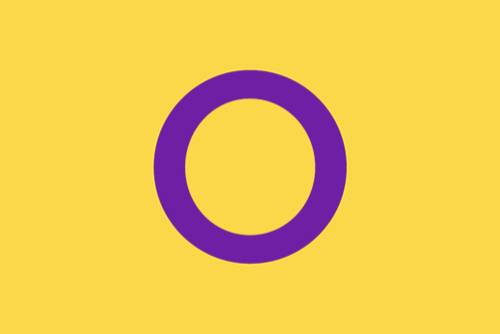
Genderqueer Flag
Genderqueer individuals are those whose gender identity falls outside of the binary male/female category.
This flag was created by Marilyn Roxie in 2011 to shine a light on the genderqueer and related communities. At first, this flag included the representation of all non-binary people as well, but as its popularity grew, it became a representative of the queer community exclusively.
An exclusive non-binary flag was later created to make up for its exclusion from the genderqueer flag and the queer community.
The flag was created with three horizontal stripes.
Lavender- As lavender as a color is a mixture of blue and pink, this became symbolic for androgyny. The mixture of these colors represents those who identify as a mixture of both male and female.
White- This color represents agender individuals.
Dark Chartreuse Green- As the opposite of lavender, this color represents those who have identities that fall outside of the general gender binary.
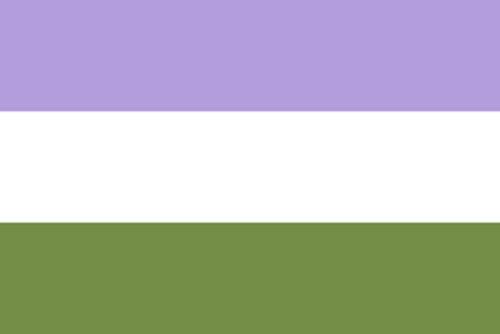
Genderfluid Pride Flags
Genderfluid people have an identity or identities that are not constant or fixed.
JJ Poole created this pride flag in 2013 to represent individuals who have a gender expression or expressions that change with circumstances and time.
Members of the genderfluid community may prefer different pronouns that fluctuate with time or in a pattern. Such individuals may also identify with the non-binary community as well as the trans community or as multigender individuals.
The flag has five horizontal stripes that symbolize the diversity of gender fluidity and identity as well as the genderfluid community as a whole.
Hot Pink- This represents femininity.
White- This color symbolizes the lack of gender.
Purple- This is a representation of the combination of both femininity and masculinity.
Black- This represents all existing genders.
Blue- This represents masculinity.
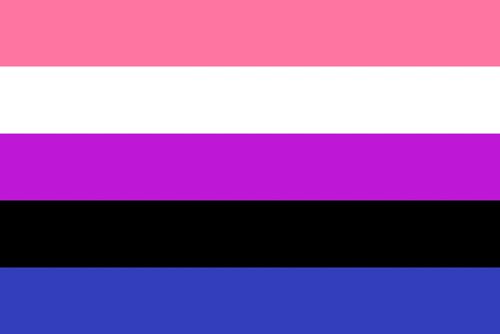
Labrys Lesbian Pride Flag
A labrys is a double-headed ax that is closely associated with the Greek goddess Demeter, The Amazons and the Minoan ancient civilization.
History has it that a Minoan woman holding a labrys was typically a person of importance in society. This weapon has become a symbol for female empowerment and lesbianism since the ’70s. With the background of the labrys conveying a strong message of empowerment for women-identified-women, it has come to represent people who believe strongly in the lesbian radical feminist movement.
The flag consists of white labrys in a black triangle on a purple background.
Purple- This color represents feminism, women in general, and all those who identify as a woman and are attracted to other women.
Black Triangle- This shape represents lesbianism.
Labrys- The labrys is a symbol of woman empowerment.
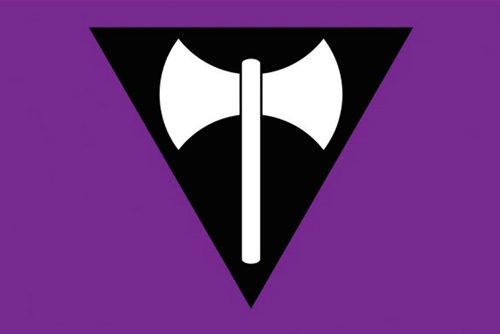
Lesbian Pride Flag
A lesbian is a woman who identifies as a woman with a sexual attraction to other women who identify as women.
The word „lesbian“ means to be a resident on the island of Lesbos. On this island, a woman named Sappho wrote numerous love poems for other women around 600 BCE. Her legacy lead to the naming of this community. Before we called the members of this community lesbians, they used to be referred to as „sapphic“ after this famous woman.
The lesbian pride flag is a seven stripe flag of various colors that are considered to be traditional feminine colors.
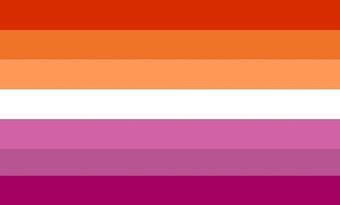
Non-binary Pride Flag
A non-binary individual does not identify with the traditional male or female binary.
The four horizontal stripes are symbolic of the experiences of non-binary community members.
This flag is intended to be flown alongside the genderqueer flag.
Yellow- This represents those whose gender do not align with the binary.
White- This color represents people who have many or all genders.
Purple- This represents gender identities that fall somewhere between male and female or is a combination of both.
Black- This represents those with no gender.
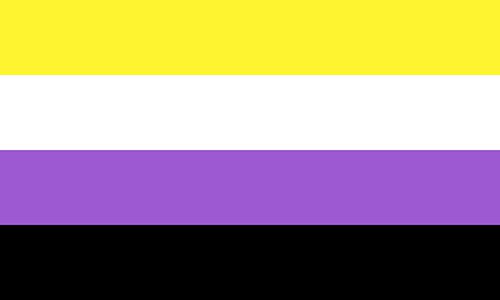
Polyamorous Pride Flag
A polyamorous person is able to love and be involved with multiple people at once, given mutual consent.
The polyamorous flag, designed by Jim Evan in 1995, became a symbol of this community that could be recognized and shared. Another version of this flag was created in 2017.
The token of the infinity hearts on the flag symbolizes the infinite love for more than one person simultaneously.
Blue- This represents the honest and transparent nature of all partners involved.
Red- This is the symbol of passion in love.
Black- This represents the unity of everyone that keeps their polyamorous relationships a secret.
Yellow- This symbolizes emotional attachment.
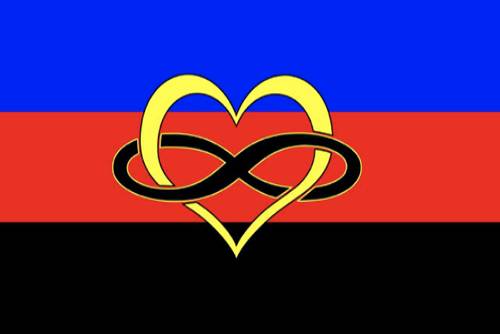
Philadelphia Pride Flag
This flag was created for Philadelphia’s „More Color More Pride“ campaign in 2017.
The design of this flag, revealed by Philadelphia City Hall, is based on the widely accepted rainbow pride flag with the addition of black and brown stripes to represent the Queer People Of Color community. Improving on the original rainbow flag, this new pride flag represents all members of the LGBTQA+ community
Black and brown stripes- This represents queer people of color.
Red- The symbol of life.
Orange- This represents healing.
Yellow- The symbol of sunlight.
Green, Blue and Violet- These colors represent nature, and harmony of the spirit.
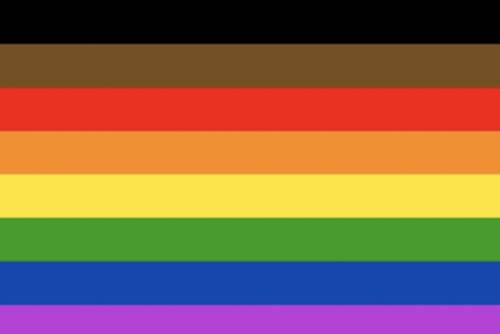
Pansexual Pride Flag
A pansexual person is attracted to others without any regard to their gender identity.
The Greek word „pan“, meaning „all“, leads to the name of this community. Being pansexual means to have no preference regarding sex or gender and to be able to be physically and emotionally attracted to anyone across the gender identity spectrum.
The goal of this flag was to create a new flag that differs from the bisexual flag.
Pink- The attraction to female-identified individuals.
Yellow- The attraction to all individuals who do not identify with the traditional male-female binary.
Blue- This represents the attraction to people who identify as male.
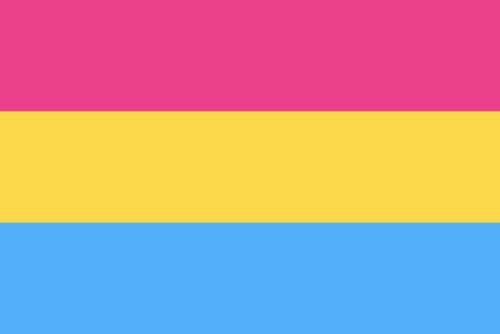
Polysexual Pride Flag
People who identify as polysexual have a sexual attraction to more than one but not all genders. This differs from those that are polyromantic and experiences romantic attraction to multiple but not all genders.
This pride flag was fashioned after the bi- and pansexual flags.
Light Blue- Attraction to those who identify as male.
Pink- Attraction to those who identify as female.
Green- Attracted to all those who identify as anything other than the traditional binary.
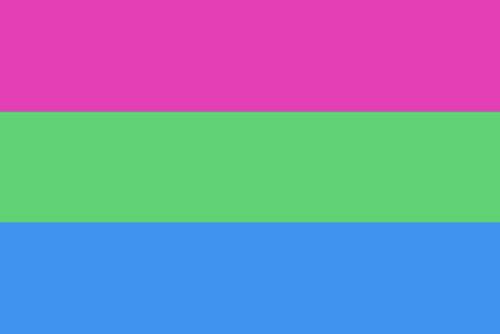
Progress Pride Flag
The progress flag is an improvement on the original pride flag in that it represents the LGBTQA+ community as well as the QPOC community.
This flag, designed by Daniel Quasar in 2018, conserved the first rainbow flag with its six colors and proudly incorporated the trans pride flag as well as a black and brown arrow shape that points right on the left edge of the progress pride flag. The arrow points right to symbolize the forward movement of LGBTQA+ rights
The progress flag was perfectly designed to ensure that the viewer inspects their own feelings toward to pride flag and who it represents.
Black and brown stripes- Black as well as Latinx queer community.
Transgender pride flag- Transgender communities.
Red, Orange, Yellow, Green, Blue- These colors represent life, healing, sunlight, nature, peace, and spirit.
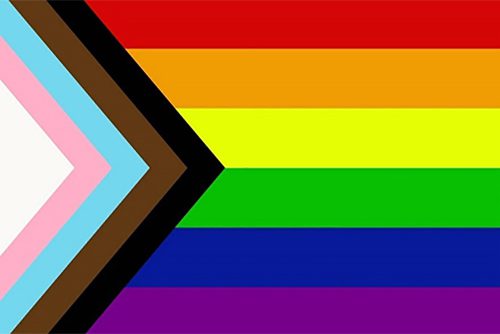
Rainbow Flag
The rainbow flag is the widely accepted and most popular flag we all know and love, representing all members of the LGBTQA+ community.
Gilbert Baker first designed the rainbow flag in 1978 after meeting the first openly gay politician, Harvey Milk.
Consisting of eight pink, red, orange, yellow, green, indigo, violet, and turquoise stripes, the rainbow flag symbolizes all the positive and uplifting qualities of the LGBTQ+ community.
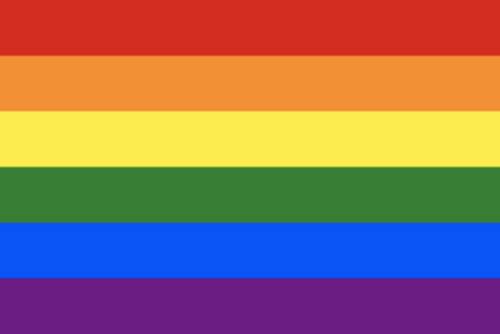
Transgender Pride Flag
Transgender people do not identify with the sex that they were born with.
Monica Helms designed the pride flag in 1999 and its popularity has grown substantially since.
Representing the trans people, the trans flag was even put on display in the White House during Pride Month. What an advancement!
Light Blue- The traditional color for boys.
Light Pink- The traditional color for girls.
White- This color is a representation of those who are transitioning, who are intersex, and those who identify as having a neutral or no gender.

Two-spirit Pride Flag
The two-spirit aims to represent queer Native Americans who have cultural perspectives of gender roles and identity.
Two-spirit people were considered to have both a male and female spirit. This concept was common even before European colonization in North America.
As gender roles plays a major part in their culture, two-spirit people expressed their gender in ways that differ from the traditional conformations.
The tradition dictates that two-spirit identity originated from supernatural intervention that had a place in tribal mythology.
Rainbow flag colors- This represents modernity.
Circle- This represents the unity of male and female genders into a new gender.
Feathers- The two feathers represent feminine and masculine identities.
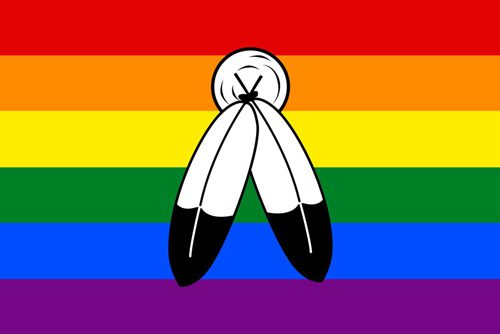
Only very recently did the LGBTQA+ community start to get the attention it deserves with many people around the world starting to gain the necessary insight into gender identity and sexual orientation. We still have a long way to go before true equality can become a reality, but we’re on the right path.
For so long have members of the gay community, trans people, and so many others tiptoed around socially accepted conventions, identities, and orientations. People are who they are, and they deserve love, acceptance and respect regardless.
By getting involved in a pride parade and waving our rainbow banners down the parade route, we honor and celebrate the diversity of the LGBTQA+ community. It should not end there. Let’s dedicate ourselves to the revolution of equality and fight to ensure that each unique individual of the LGBTQA+ community gets the devoted support of those around them.
In the renowned words of Mahatma Gandhi, „You must be the change you wish to see in the world.“

